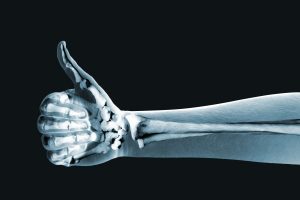Phil Butler – a physicist at the University of Canterbury – along with his son, Anthony – a radiologist at the Universities of Otago and Canterbury – invented a revolutionary 3D color medical scanner known as the MARS spectral X-ray scanner.
For the first time, researchers have captured 3D images of the human body. The hope is that by using the 3D X-ray spectral scanner, doctors can eventually diagnose cancers and blood diseases without invasive surgery.
Spectral imaging is a branch of spectroscopy and of photography in which a complete spectrum or some spectral information (such as the Doppler shift or Zeeman splitting of a spectral line) is collected at every location in an image plane.
The Butlers integrated CERN’s Medipix3 detector technology into their medical scanner. Medipix3 uses the same CERN particle detector technology used in the search for Higgs Boson particle – a project that won lead scientists François Englert and Peter W. Higgs the Nobel Prize in Physics in 2013.
This technology counts subatomic particles as they meet pixels when its electronic shutter is open. This allows for the generation of high-resolution images of soft tissues, including minute disease markers.
According to Anthony Butler, “We can make out details of various tissues, like bones, fats, water and cartilage, all functioning together inside the human system. It really is like the upgrade from black-and-white film to color. It’s a whole new X-ray experience.”
In traditional computed tomography, or CT scans, X-ray beams are measured after passing through human tissue. The resulting image appears white where dense bone tissue has absorbed the beams, and black where softer tissues have not.
The new scanner matches individual X-ray photon wavelengths to specific materials, such as calcium. It then assigns a corresponding color to the scanned objects. The tool then translates the data into a three-dimensional image.
The ability for this technology to perform within the exact specifications designed relies on the accuracy of the lenses incorporated in such advanced technology. At Universe Optics, we are committed to deliver a precision lens designed and manufactured to meet the demands of your design.
The next step in development is an imminent clinical trial where orthopedic and rheumatology patients from Christchurch will be scanned. This will allow the MARS team to compare the images produced by their scanner with the technology currently used in New Zealand hospitals.
According to Dr. Gary E. Friedlaender, an orthopedic surgeon at Yale University, the 3D X-Ray spectral scanner could serve as a diagnostic road map to a destination. “It’s about being able to first find the explanation for somebody’s symptoms, like a tumor, and then find the best way to reach it with the least amount of detours and misadventures,” he said. “We want to minimize the damage to normal tissues.”
Professor Anthony Butler says after a decade in development it is really exciting to have reached a point where it’s clear the technology could be used for routine patient care.